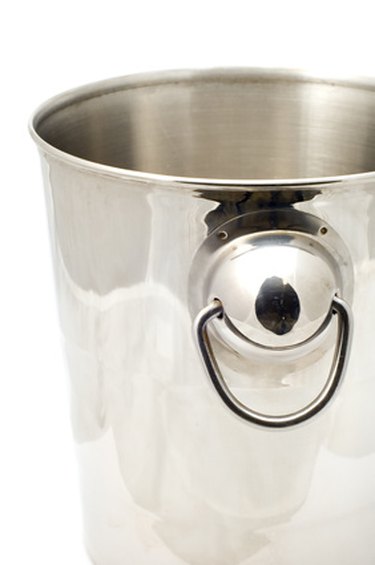
The one similarity that all types of buckets share is their ability to store and/or move liquid and earth or debris. Any design differences occur as a result of the amount of earth or debris to move (i.e. buckets attached to industrial equipment), or with any religious or spiritual significance attached to ancient containers of bygone eras. The hollow, cylindrical design of the basic water-carrying bucket, however, has been in use since the beginning of recorded time.
Standard Water-carrying Bucket
Video of the Day
The traditional water-carrying bucket is the familiar form of the bucket. These cylindrical, wide-mouthed vessels are not only used to carry liquid, but also to hold paint and joint compound, mix cement in, carry sand or gravel and chill beverages on ice. Ancient water-carrying buckets were frequently made of metal or glass, and over a period of centuries were more frequently made of wood. Often wooden buckets were composed of a circle of wooden slats held tightly together at the base and top with two metal rings in the manner of a wooden barrel. From the 20th century on, water-carrying buckets have been made of lightweight galvanized metal and plastic.
Video of the Day
Situla
A situla is a bucket-shaped vessel made of glass or metal with a handle of cord or wire attached to the side for carrying. Situlas were used in ancient Egypt and Greece for carrying water and wine. They were also used in Egypt during temple rituals as votive offerings. In the early medieval era, situlas were often made of bronze and used to hold holy water. Situlas which were meant as ritual offerings and containers for holy water did not have handles and looked as much like decorative urns as buckets.
Loader Buckets
Bucket loaders, or front-end loaders, are used on construction sites to scoop up materials and move them out of the way of construction, often into a dump truck. The bucket of a bucket loader is connected to the actual vehicle by two hydraulic arms and is used to plow into the material or debris to scoop and move. Many types of specialized buckets can attach to a bucket loader, including hot slag buckets meant specifically for steel mill work and stump buckets designed to rip stump roots from the ground and scoop them up in one movement.